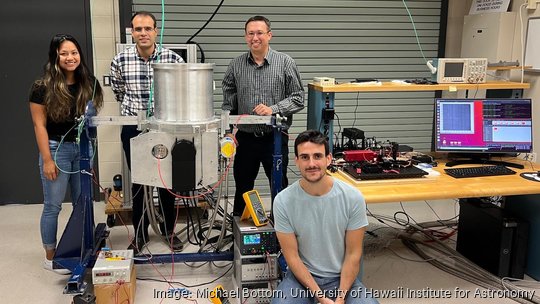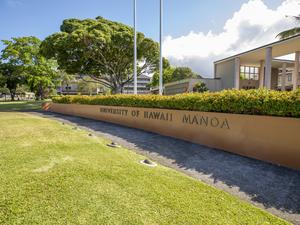
A research team led by University of Hawaii Institute for Astronomy astronomer Michael Bottom was awarded a $4 million grant from NASA, the university recently announced.
According to a June 22 announcement, the grant will aid the team's exoplanet research and will be used to develop "a new generation of ultra-sensitive sensors needed to observe distant planets and their atmosphere."
A survey that identifies the top U.S. astronomy priorities for the next decade has identified "a new 6-meter space telescope optimized for exoplanet direct imaging and spectroscopy as the highest priority space mission," the announcement noted, adding that the mission aims to "unambiguously identify and classify about 25 Earth-like exoplanets to determine if they possess atmospheres suitable for life."
The UH team will provide the sensors for that project.
"The technology developments required to make this space mission viable are extremely ambitious, and detectors are among the most difficult parts,” Bottom said in a statement. “But when it flies, we'll be able to tell for the first time if habitable, Earth-like planets are common in our corner of the universe."
According to the university, many ground- and space-based telescopes, including the Hubble Space Telescope, James Webb Space Telescope and Keck Observatory, among others, use IfA-developed infrared sensors.
"The new mission is extremely challenging because Earth-like planets are fainter than the stars themselves. Taking images of such planets is impossible today, and making detailed measurements of their atmospheres is even harder," the announcement read, adding that even the best infrared detectors today have too much "inherent electronic noise," or the graininess in images taken in low-light conditions with high camera sensor sensitivity.
One way to achieve the sensitivity needed to study exo-Earth atmospheres is to multiply the signal received by the detector before measuring it electronically, according to the announcement.
For the last several years, with NASA support, IfA astronomers and industry partners at Leonardo, Markury Scientific and Hawaii Aerospace, have been "maturing" this alternate technology, according to the announcement, which noted the technology has been demonstrated with one megapixel sensors. The NASA grant will allow the team to increase the size of the new sensors to four megapixels.
The new detector could also be used by other projects that look at space-based spectroscopy of faint galaxies, precision photometry and ground-based high-resolution infrared spectroscopy, the announcement noted.






